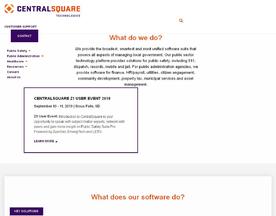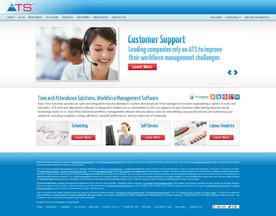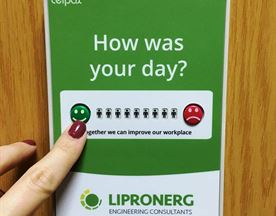What is favoritism in the workplace? Favoritism in the workplace is when a person is given preferential treatment or advantages by employers or managers over others without merit-based reasons.
Favoritism in the workplace is a topic that has been discussed for decades, yet it remains a prevalent issue in many organizations. It occurs when managers or supervisors show preferential treatment to certain employees, giving them better opportunities, rewards, and recognition over others. This can lead to feelings of resentment, demotivation, and a lack of trust among team members.

Understanding the root causes of favoritism is crucial to addressing the issue. It can stem from personal biases, relationships outside of work, or a lack of objective performance metrics. Regardless of the cause, favoritism can have a significant impact on employee morale, productivity, and retention. It can also lead to legal and ethical concerns, particularly if it involves discrimination based on protected characteristics such as race, gender, or age.
Key Takeaways
- Favoritism in the workplace can lead to feelings of resentment, demotivation, and a lack of trust among team members.
- It can stem from personal biases, relationships outside of work, or a lack of objective performance metrics.
- Addressing favoritism requires a combination of legal and ethical considerations, effective communication and feedback mechanisms, and a commitment to building an inclusive work environment.
Here is a link to an external resource from Forbes that discusses the impact of favoritism in the workplace
Understanding Favoritism in the Workplace
Favoritism in the workplace is a common issue that can lead to a toxic work environment. It occurs when a manager or supervisor shows preferential treatment towards certain employees over others, regardless of their performance or qualifications. This can lead to resentment, low morale, and a lack of trust among employees.
Definitions and Types
Favoritism can take many forms, including cronyism and nepotism. Cronyism occurs when a manager or supervisor shows favoritism towards friends or associates, while nepotism occurs when they show favoritism towards family members. Both types can create a perception of unfairness and can damage the credibility of the organization.
Signs of Favoritism
There are several signs of favoritism in the workplace that employees should be aware of. These include:
- Certain employees receiving preferential treatment, such as being given more opportunities for advancement or receiving better assignments
- Managers or supervisors socializing with certain employees outside of work
- Certain employees receiving more attention or praise than others, regardless of their performance
- Managers or supervisors ignoring complaints or concerns raised by certain employees
Consequences of Favoritism
Favoritism can have serious consequences for both employees and the organization as a whole. These include:
- Low morale and a lack of trust among employees, which can lead to decreased productivity and increased turnover
- Legal issues, as favoritism can be seen as discrimination and can lead to lawsuits
- Damage to the reputation of the organization, which can make it difficult to attract and retain top talent
It is important for organizations to take steps to prevent favoritism in the workplace and to address it when it does occur. This can include implementing clear policies and procedures for promotions and assignments, providing training for managers and supervisors on how to avoid favoritism, and creating a culture of fairness and transparency.
For more information on favoritism in the workplace, check out this article from Forbes.
Impact on Employees and Teams
Favoritism in the workplace can have a significant impact on employees and teams. Here are some of the ways in which it can affect them:
Employee Morale and Engagement
When employees perceive that favoritism is present in the workplace, it can lead to a decrease in morale and engagement. Employees who feel that they are not being treated fairly may become disengaged and less motivated to perform their jobs at a high level. This can lead to a decrease in productivity and an increase in turnover rates.
According to a study conducted by the Society for Human Resource Management, “employees who perceive favoritism in the workplace are more likely to be disengaged and less committed to their jobs.” This can have a negative impact on the overall culture of the organization and can lead to a decrease in employee satisfaction.
Team Dynamics and Productivity
Favoritism can also have a significant impact on team dynamics and productivity. When employees perceive that certain team members are receiving preferential treatment, it can lead to resentment and conflict within the team. This can lead to a breakdown in communication and collaboration, which can ultimately result in a decrease in productivity.
According to a study conducted by Harvard Business Review, “favoritism can create a toxic work environment that undermines team morale and productivity.” This can have a negative impact on the overall success of the organization.
Professional Growth and Opportunities
Favoritism can also impact professional growth and opportunities within the organization. When certain employees are given preferential treatment, it can limit the opportunities available to other employees. This can lead to a lack of career advancement and growth opportunities, which can ultimately result in a decrease in employee motivation and engagement.
According to an article published by Forbes, “favoritism can create a culture of entitlement that limits the opportunities available to other employees.” This can have a negative impact on the overall success of the organization and can lead to a decrease in employee satisfaction.
In conclusion, favoritism in the workplace can have a significant impact on employees and teams. It can lead to a decrease in morale and engagement, a breakdown in team dynamics and productivity, and a lack of professional growth and opportunities. It is important for organizations to address favoritism and promote a culture of meritocracy in order to ensure the success and satisfaction of their employees.
Legal and Ethical Considerations
Discrimination and Protected Characteristics
Favoritism in the workplace can lead to discrimination, which is illegal and unethical. Discrimination occurs when an employer treats an employee or a group of employees unfairly because of their protected characteristics such as gender, race, age, or disability.
Employers should be aware of the protected characteristics and ensure that they do not show favoritism towards employees based on these characteristics. For example, if an employer gives preferential treatment to male employees over female employees, it could be considered gender discrimination. Similarly, if an employer gives preferential treatment to younger employees over older employees, it could be considered age discrimination.
Legal Repercussions
Showing favoritism can result in a lawsuit against the employer. If an employee feels that they have been discriminated against, they can file a lawsuit against their employer. The lawsuit can result in the employer having to pay damages to the employee and can also result in negative publicity for the company.
It is important for employers to be aware of the legal repercussions of showing favoritism. Employers should have policies and procedures in place to prevent favoritism and discrimination. They should also train their employees on these policies and procedures to ensure that everyone is aware of them.
Employers can also seek guidance from external resources such as the U.S. Equal Employment Opportunity Commission (EEOC). The EEOC is responsible for enforcing federal laws that make it illegal to discriminate against a job applicant or an employee because of the person’s race, color, religion, sex (including pregnancy, gender identity, and sexual orientation), national origin, age (40 or older), disability, or genetic information. Employers can visit the EEOC website for more information on how to prevent discrimination in the workplace.
(Source: U.S. Equal Employment Opportunity Commission)
Managing Favoritism in the Workplace

Favoritism in the workplace can be a major issue that can lead to employee dissatisfaction, decreased productivity, and even legal issues. In order to prevent favoritism in the workplace, managers, supervisors, and business owners need to take proactive steps to foster a fair and transparent work environment.
Strategies to Prevent Favoritism
One of the most effective strategies to prevent favoritism in the workplace is to establish clear guidelines and policies that are enforced consistently. This can include policies related to promotions, raises, and other forms of recognition. By establishing clear criteria for advancement and recognition, employees will be less likely to perceive favoritism or bias.
Another strategy to prevent favoritism is to encourage open communication and feedback. By soliciting feedback from employees and actively listening to their concerns, managers and supervisors can identify potential issues related to favoritism and take corrective action.
Fostering Fairness and Transparency
Creating a culture of fairness and transparency is essential to preventing favoritism in the workplace. This can include providing regular performance feedback to employees, establishing clear expectations for behavior and performance, and providing opportunities for training and development.
Managers and supervisors should also strive to create a work environment that is inclusive and welcoming to all employees. This can include celebrating diversity, providing opportunities for employee input and feedback, and actively addressing any issues related to discrimination or harassment.
Leadership and Accountability
Leadership and accountability are critical to preventing favoritism in the workplace. Managers and supervisors must lead by example and demonstrate a commitment to fairness and transparency. This can include holding themselves accountable for their actions and decisions, providing regular feedback to employees, and actively addressing any issues related to favoritism or bias.
Business owners and executives must also take responsibility for creating a work environment that is free from favoritism and bias. This can include providing resources and support to managers and supervisors, establishing clear policies and guidelines, and holding all employees accountable for their behavior and performance.
Overall, preventing favoritism in the workplace requires a proactive and ongoing commitment to fairness, transparency, and accountability. By taking these steps, managers, supervisors, and business owners can create a work environment that is inclusive, productive, and fulfilling for all employees.
Here is an external resource with high authority on preventing favoritism in the workplace.
Building an Inclusive Work Environment

Creating an inclusive work environment is crucial to promoting equal opportunities and fostering a positive workplace culture. Inclusive workplaces provide equal opportunities for all employees, regardless of their background, gender, race, or ethnicity. This section will explore some strategies that organizations can use to build an inclusive work environment.
Promoting Equal Opportunities
To promote equal opportunities, organizations should ensure that their recruitment and selection processes are fair and unbiased. This can be achieved by using objective criteria for job requirements and avoiding any discriminatory practices. Organizations should also provide equal pay for equal work and offer flexible work arrangements to accommodate diverse needs.
Another way to promote equal opportunities is to provide training and development programs that are accessible to all employees. By investing in their employees’ professional growth, organizations can help them reach their full potential and contribute to the organization’s success.
Mentorship and Professional Development
Mentorship and professional development programs can also play a crucial role in building an inclusive work environment. These programs can help employees develop their skills and knowledge, build their confidence, and expand their networks. By providing mentorship opportunities, organizations can help employees from diverse backgrounds overcome barriers to success and achieve their career goals.
Organizations can also encourage employees to participate in professional development programs by offering incentives such as tuition reimbursement or paid time off. By investing in their employees’ professional development, organizations can create a culture of continuous learning and improvement.
To learn more about building an inclusive work environment, organizations can refer to resources such as the Society for Human Resource Management’s Diversity and Inclusion Resource Center.
Communication and Feedback Mechanisms

Effective communication and feedback mechanisms are essential in preventing favoritism in the workplace. This section discusses some of the ways organizations can ensure open communication and feedback channels to promote fairness and equity.
Performance Reviews and Feedback
Performance reviews are an important tool for providing feedback to employees and assessing their progress. However, if not conducted fairly, they can lead to favoritism and bias. To prevent this, organizations should ensure that performance reviews are conducted in a transparent and objective manner. This includes setting clear expectations, providing regular feedback, and using objective criteria to assess performance.
Moreover, organizations should ensure that performance reviews are conducted by trained and impartial reviewers. This helps to prevent any biases that may arise due to personal relationships or other factors. Additionally, organizations should encourage employees to provide feedback on the performance review process to identify any areas of improvement.
Open Channels for Employee Concerns
Organizations should provide open channels for employees to express their concerns and suggestions. This helps to build trust and ensures that all employees are treated fairly. Employees should be encouraged to report any incidents of favoritism or bias, and the organization should have clear procedures for addressing such complaints.
One way to promote open communication is to establish an anonymous suggestion box or hotline. This allows employees to provide feedback without fear of retaliation. Additionally, organizations should conduct regular surveys to assess employee satisfaction and identify areas of improvement.
To further promote open communication, organizations can provide training to employees on how to communicate effectively and professionally. This includes active listening, conflict resolution, and assertiveness skills.
Overall, effective communication and feedback mechanisms are essential in preventing favoritism and promoting fairness in the workplace. By establishing transparent and objective performance review processes and providing open channels for employee concerns, organizations can build a culture of trust and equity.
Here is a helpful resource on how to conduct fair and objective performance reviews.
Best Practices for Managers and Leaders

Recognizing and Addressing Favoritism
Managers must recognize the signs of favoritism in the workplace and address them promptly. They should be aware of how their actions may be perceived by their employees and how it can affect their motivation and morale. Managers should also be empathetic towards their employees and ensure that their actions are fair and just.
To address favoritism, managers should establish clear and transparent guidelines for promotions, bonuses, and other rewards. They should also ensure that all employees have equal access to training and development opportunities. Managers should also encourage employees to provide feedback on their work environment and address any concerns that are raised.
Encouraging Respect and Collaboration
Managers should encourage respect and collaboration among employees to prevent favoritism from taking root in the workplace. They should create a culture of inclusivity and diversity where all employees feel valued and respected for their contributions.
To encourage collaboration, managers should create opportunities for employees to work together on projects and initiatives. They should also establish clear communication channels and encourage employees to share their ideas and feedback. Managers should also lead by example and demonstrate respectful behavior towards all employees.
In conclusion, managers play a critical role in preventing favoritism in the workplace. By recognizing and addressing favoritism and encouraging respect and collaboration, managers can create a positive work environment where all employees can thrive. For more information on best practices for managing favoritism in the workplace, visit this link from the Society for Human Resource Management.
Frequently Asked Questions

What are the signs that indicate favoritism in the workplace?
There are several signs that may indicate favoritism in the workplace. Some of the common signs include unequal distribution of work, preferential treatment towards certain employees, exclusion of some employees from important meetings or projects, and promotion of less qualified individuals based on personal relationships. If you notice any of these signs, it is important to document them and bring them to the attention of your supervisor or HR department.
What steps should I take to formally address favoritism in my company?
If you believe that favoritism is occurring in your workplace, it is important to take action to address it. The first step is to document any instances of favoritism that you have observed. You should then bring your concerns to your supervisor or HR department. If your concerns are not addressed, you may need to escalate the issue to higher levels of management or file a formal complaint with your company’s HR department.
How can favoritism in the workplace be effectively managed or mitigated?
Favoritism in the workplace can be effectively managed or mitigated by implementing clear policies and procedures for promotions, assignments, and other important decisions. It is also important to ensure that all employees are treated fairly and that personal relationships do not influence decision-making. Regular training and education on the topic of favoritism can also help to raise awareness and prevent it from occurring in the first place.
In what ways does favoritism in the workplace constitute discrimination?
Favoritism in the workplace can constitute discrimination if it is based on an employee’s race, gender, age, disability, or other protected characteristic. Discrimination can have serious legal consequences for employers, so it is important to ensure that all employees are treated fairly and that personal relationships do not influence decision-making.
What are some common examples of unfair treatment in the workplace that may be due to favoritism?
Some common examples of unfair treatment in the workplace that may be due to favoritism include unequal distribution of work, preferential treatment towards certain employees, exclusion of some employees from important meetings or projects, and promotion of less qualified individuals based on personal relationships.
How should an employee deal with instances of nepotism and favoritism in their work environment?
If an employee encounters instances of nepotism and favoritism in their work environment, they should document any instances of favoritism and bring their concerns to their supervisor or HR department. If their concerns are not addressed, they may need to escalate the issue to higher levels of management or file a formal complaint with their company’s HR department. It is important to remain professional and objective when addressing these issues, and to focus on finding a solution that benefits all employees.
For more information on favoritism in the workplace, you can visit the Equal Employment Opportunity Commission’s website.















